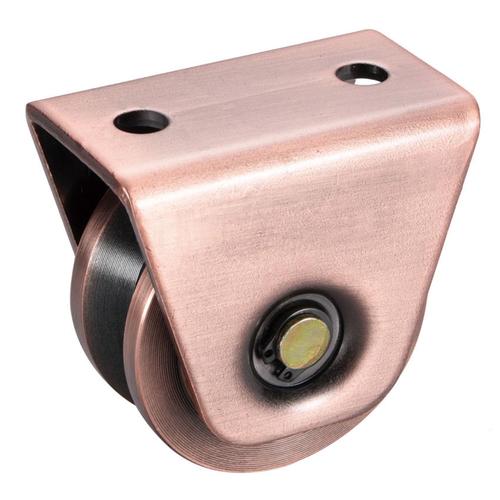Top 5 Machinery Roller Bearings for Mining Equipment: Selection, Maintenance, and Performance Tips
Machinery roller bearings are critical components in mining equipment, designed to withstand extreme loads, abrasive environments, and continuous operation. These specialized bearings ensure smooth rotational movement while reducing friction in crushers, conveyors, and drilling machinery. Proper selection and maintenance directly impact equipment longevity and operational efficiency in demanding mining applications.
1、heavy duty roller bearings for mining machinery2、mining equipment bearing maintenance
3、high temperature roller bearings mining
4、sealed roller bearings for abrasive environments
5、mining conveyor roller bearings
1、heavy duty roller bearings for mining machinery

Heavy duty roller bearings form the backbone of mining machinery, engineered to support radial and axial loads exceeding 500kN. These bearings feature reinforced cages made from chrome steel or tungsten carbide, with optimized raceway designs preventing deformation under shock loads. Leading manufacturers utilize advanced heat treatment processes to achieve 60-62 HRC hardness, significantly improving wear resistance in ore processing equipment. Case studies from copper mines demonstrate that premium-grade heavy duty bearings can operate 12,000 hours without replacement when paired with proper lubrication systems. Key selection criteria include dynamic load ratings (C/P ratio ≥ 15), ISO 281:2007 certification, and compatibility with automated lubrication systems.
2、mining equipment bearing maintenance
Proactive maintenance extends roller bearing lifespan by 40-60% in mining applications. Implement condition-based monitoring using vibration analysis (ISO 10816-3 standards) and infrared thermography to detect early signs of lubrication failure or misalignment. Establish regreasing intervals based on operational parameters: 200-hour cycles for high-speed crushers vs 500-hour cycles for conveyor systems. Utilize automated lubrication systems maintaining 0.1-0.3mm grease film thickness. Post-maintenance inspections should verify proper axial clearance (0.05-0.15mm for spherical rollers) and seal integrity. Document maintenance history using CMMS software to predict failure patterns and optimize inventory management.
3、high temperature roller bearings mining
Mining operations exposing bearings to 150°C require specialized high-temperature solutions. Silver-plated cages and graphite-based lubricants maintain stability at extreme temperatures, while ceramic hybrid bearings (silicon nitride rollers) reduce thermal expansion by 30%. Critical design considerations include thermal displacement compensation in bearing housings and oxidation-resistant steel alloys. Field tests in smelting facilities show that bearings with M50 steel composition withstand 300°C environments for 8,000 operational hours. Always pair with high-temperature seals (FKM or PTFE materials) and implement cooling jackets when ambient temperatures exceed 180°C.
4、sealed roller bearings for abrasive environments
Triple-labyrinth seals with particle exclusion grooves protect bearings from 99.7% of abrasive contaminants in mining operations. Combine with flinger rings and V-ring seals for complete protection in crusher applications. Opt for bearings featuring wear-resistant coatings like WC/C or DLC (Diamond-Like Carbon) on raceways. Recent advancements include magnetic seals that actively repel metallic particles. Field data from iron ore mines indicates that properly sealed bearings reduce premature failures by 75% compared to standard designs. Ensure seal materials match operational temperatures (-40°C to 200°C range) and chemical exposure conditions.
5、mining conveyor roller bearings
Conveyor systems demand bearings with exceptional impact resistance and self-aligning capabilities. Spherical roller bearings with brass cages and logarithmic roller profiles are ideal for handling belt misalignments up to 2.5°. Prioritize units with 6200-6300 series dimensions for interchangeability. Implement predictive maintenance through acoustic emission monitoring to detect early roller jamming. Recent innovations include smart bearings with embedded sensors transmitting real-time load and temperature data via IoT networks. Proper installation requires precise axial preload adjustment (0.02-0.05mm) and alignment within 0.1mm/meter tolerance.
Understanding these five critical aspects of machinery roller bearings ensures optimal mining equipment performance. From selecting heavy-duty components to implementing advanced sealing technologies, each element contributes to operational reliability. The following sections delve deeper into maintenance best practices and technical specifications that directly impact bearing service life in harsh mining conditions. Discover how proper lubrication strategies can reduce downtime by 35% and learn about emerging smart bearing technologies revolutionizing preventive maintenance approaches.
This comprehensive guide provides essential knowledge for optimizing machinery roller bearings in mining operations. By implementing proper selection criteria, maintenance protocols, and advanced sealing solutions, operators can significantly enhance equipment reliability while reducing total ownership costs. Stay ahead in the mining industry by adopting these proven strategies for bearing performance optimization.




 13869596835
13869596835